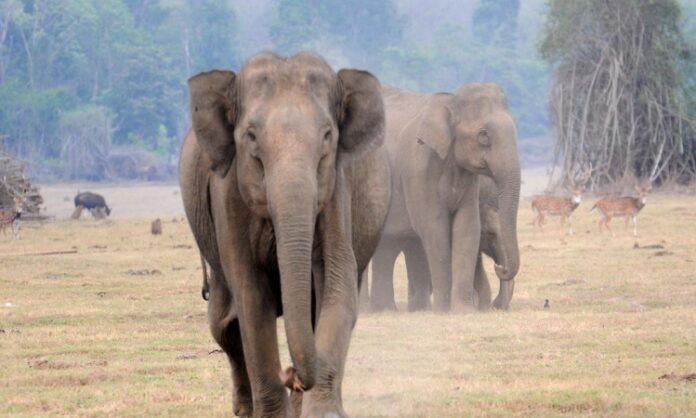Bengaluru: The interstate coordination committee (ICC), set up by the state governments of Karnataka, Kerala and Tamil Nadu, conducted the synchronized population estimate of elephants in the Nilgiri Biosphere Reserve. The population estimation of the mammoth was also aimed at gauging the population dynamics, conflict potential and to evolve a holistic conflict management strategies.
The ICC was established by the three states in response to increasing human-elephant conflict and elephant movements within the Nilgiri Biosphere Reserve, said a senior officer of the forest department. The ICC charter was signed at Bandipur National Park by the forest ministers of Karnataka, Kerala, and senior forest officials from Tamil Nadu. This charter mandates a synchronized population estimation exercise across the interstate region.
Officials said a synchronized elephant population estimation exercise was conducted across the southern states of Karnataka, Kerala, Tamil Nadu, and Andhra Pradesh from May 23 to 25. In Karnataka, the exercise spanned 10 forest divisions on the interstate boundary, involving Kolar, Cauvery Wildlife, MM Hills Wildlife, BRT Tiger Reserve, Bannerghatta National Park, Bandipur Tiger Reserve, Nagarahole Tiger Reserve, Madikeri Territorial, Madikeri Wildlife, and Virajpet. This extensive effort covered 65 forest ranges and 563 beats, engaging 1,689 personnel over three days.
Exercise comprised three key activities
Block sampling or direct count exercise (Day 1 on May 23): On the first day, data from beats with known elephant presence, collected during the 2023 exercise, were used to select 50% of the beats randomly. Sample blocks of 5 sq km were chosen from each forest division, ensuring a representation of diverse vegetation, altitudinal, and rainfall patterns. Teams of two to three members systematically surveyed each selected block, walking a minimum of 15 km to record all elephant sightings on provided data sheets. The area of each sample block was accurately marked on maps. Staff recorded the age and sex of all elephants seen whenever possible.
Line transects exercise (Day 2 on May 24) : On the second day, marked line transects of 2 km each were surveyed across the divisions. Staff walked these transects, recording data on elephant dung piles observed on either side. The perpendicular distance of the dung piles from the line and the freshness of the dung piles (less than 24 hours, more than 24 hours) were documented. These exercises contributed to estimating elephant abundance in the surveyed habitats, alongside data on forest cover and land use types.
Waterhole direct count exercise with photographic evidence (Day 3 on May 25): On the final day, the exercise focused on waterholes, salt licks, and open areas frequently used by elephants. From 6 am to 6 pm, fixed-point observations were conducted at these locations. Teams recorded the size of elephant herds, age, and gender of individuals, and captured photographs of the elephants. This data was used to assess the age and sex distribution of the elephant populations.
IISc to analyse population estimation data
The data collected during the three-day exercise is currently being compiled and will be analyzed by scientists from the Indian Institute of Science (IISc), Bangalore, using advanced statistical methods. The results will provide a comprehensive population estimate for elephants in the areas bordering the four participating states, offering crucial insights for future conservation and conflict management efforts.




